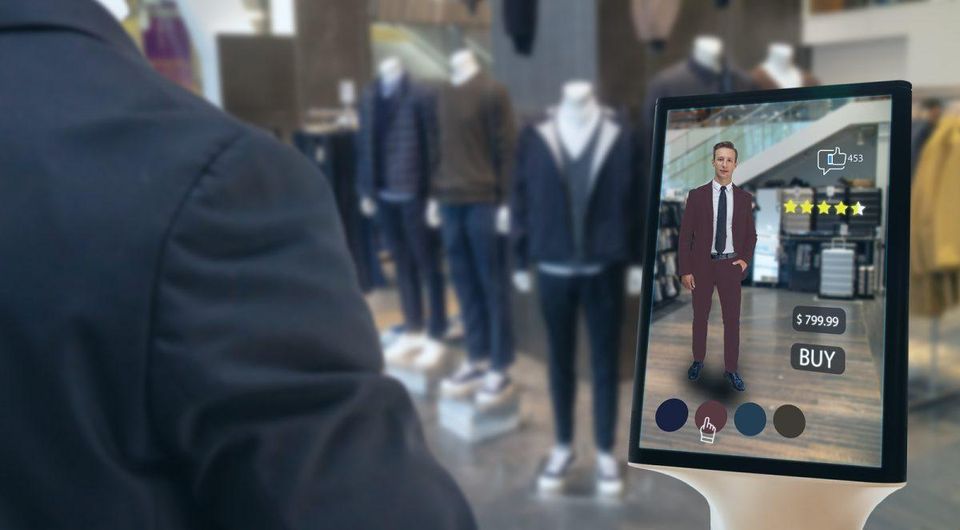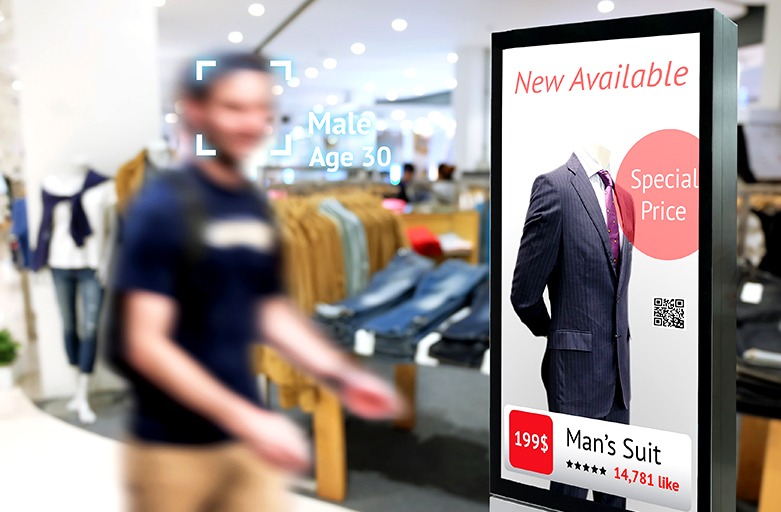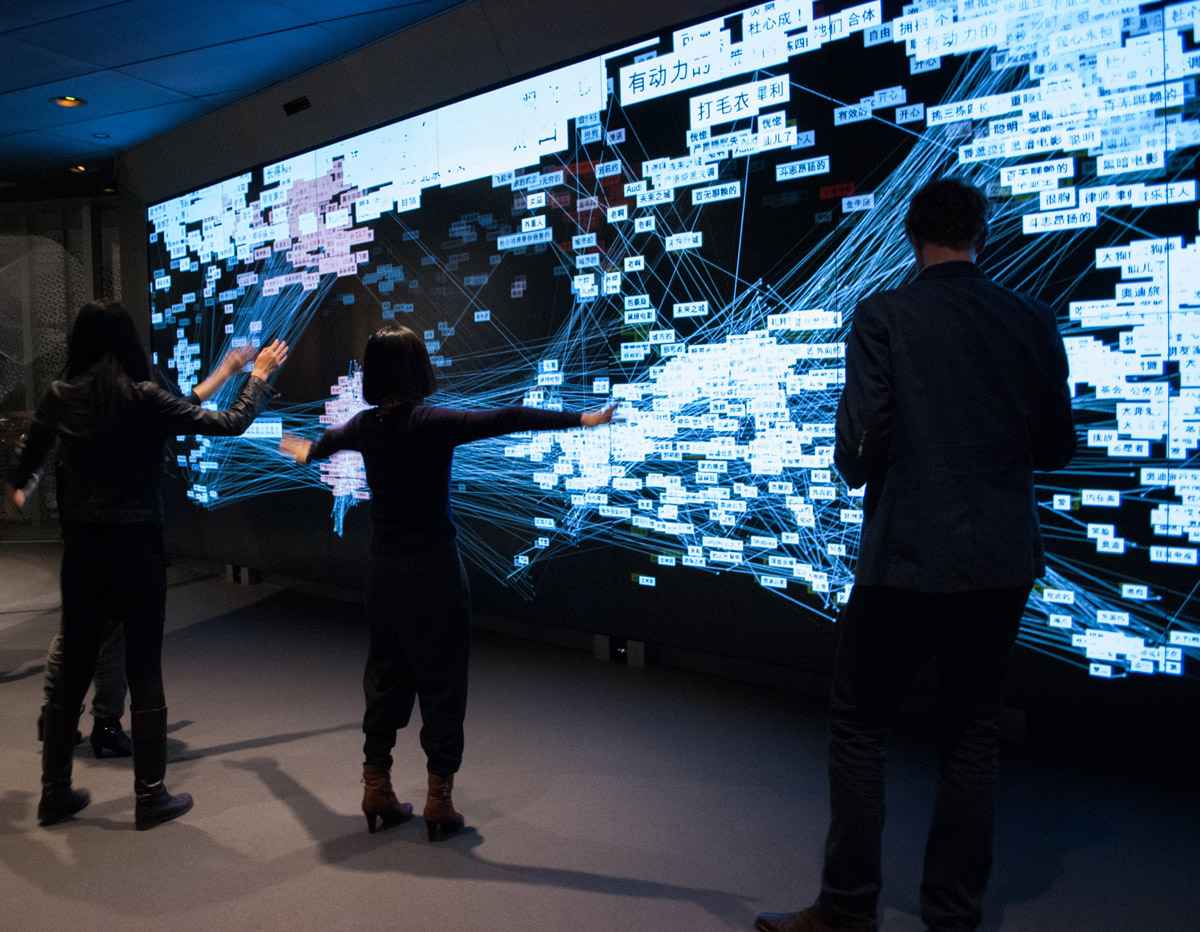The term HCI (Human-Computer Interaction) came about to explain what happens in the ‘in-between’ section of having a device and actually using it, hinged on the basis that if you are to use a computer or digital device you have to interact with it in some way.
By first understanding how as human beings we interact with computers and screens, we will be in a better position to tailor content and messaging for not a whole segment – but each individual within that segment.
This foundation has also shown a definite trend towards hands-free interactions, automation and personalisation, and some would say this is where the true understanding of digital signage began and the reason why it continues to evolve.
- Interactive
- Voice-activated interface
- Augmented reality
- Facial recognition
- Gesture interaction and its use in gamification
Interactive
If you’re to think about how interactive point of sale and other advertisement mediums were at the start of the previous decade or even before that, it’s clear to see that businesses have come leaps and bounds from relying on a paper-based point of sale to now having people interact with their digital signs as they come across them and following specific call to actions like scanning a QR code. No, it’s no longer something you saw in the 2002 sci-fi thriller Minority Report, it is actually becoming our reality.
However, while some businesses with accommodating models are finding things like promoting services, communicating messaging and brand identity could not be easier with digital, others are buckling under the weight of having to find new and inventive ways that satisfy an increasingly digital-orientated market that is becoming even more difficult to reach.
It is anticipated that by 2021 more than 25% of the population will be made up of Generation Z, and as they age, graduate from university and enter the workforce their buying power is expected to increase. They are not only the future of retail, but other important industries and they want very different things especially in the way they’re communicated with than say a Millennial.
So, if your audience is changing, their preferences are changing and the way they like to be communicated with is also changing, is it fair to say that the way you try to communicate with them needs to change also?
A few things to think about when looking at how to reach your Generation Z.
Voice-activated interface

Voice-activated interfaces are becoming more popular with some of the most notable examples being the introduction of Apple’s Siri, Amazon’s Alexa and Microsoft’s Cortana, but this wasn’t always so. There was once a time where speaking to a device would’ve raised a few eyebrows and questions around one’s sanity, but now screaming at a speaker from across the room is a norm. Some think that eventually, it will come to a point where even the most common thing will be assisted by some form of voice assistant and that is just the start. This interface aims to satisfy an audience used to hands-free commands and who prefer to multi-task at their convenience. By taking their desire and providing a solution Amazon, Apple and Microsoft have begun laying the foundations for something much bigger.
If you are to apply this same principle, why not think about ways in which your digital signage can be adapted to become more intuitive?
Augmented reality
So far, we've only seen a select few retailers who have successfully adopted AR technology and as a result, yielded positive results.
As previously discussed in a previous blog, shoppers are wanting convenience and more compelling reasons to visit a brick-and-mortar store, especially when it is quicker and easier to shop online. Using AR gives retailers the upper hand needed to grab attention and make what can only be possible in your mind a reality.
What about using technology to help a customer visualise/see themselves in a product without having to go through the hassle of trying it on? Or show them the use of your product instead of telling them or showing them someone else using it?
However, in Forbes Retail Needs Augmented Reality Experiences, Not Promotions article, Nikki Baird the Vice President of Retail Innovation at Aptos, a retail solution provider wrote about the benefits and pitfalls retailers are discovering when adopting AR and even when they don’t.
“Consumers are not already naturally using AR (vs. naturally flocking to social media). If retailers succumb to the temptation to use AR as a promotion-delivery mechanism, they risk alienating consumers away from what really should be considered an “experience” channel.”
Simply put, there is still a lack of understanding as to how AR can be used and used effectively. It is not a tool similar to social media and other applications already established in the market, and it is because of this fact that it has much potential, but also much to be wary of, which is why understanding your audience, their needs and your selling proposition completely is necessary as you run the risk of losing your existing and prospective customers and much worse – your brand identity.
Facial recognition
The new kid on the block that’s making shockwaves.
Facial recognition involves embedding cameras into screens that can scan and analyse the most minute detail like a person's height, gender, age, ethnicity and whether they're alone or with a family to trigger personalised and appropriate content. By setting parameters users can provide only relevant information to the viewer making for more targeted adverts.
If effectively used, facial recognition technology has the potential to increase customer satisfaction, improve staff management and provide invaluable insight and data.
For instance, by collecting shopper data at each stage of the customer journey retailers can not only optimise and plan their product offerings but also make changes to the layout and reposition stock making it easier for shoppers to navigate and receive promotions.
In 2018 7-Eleven the Japanese-American international chain of convenience stores combined facial recognition with behavioural analytics in 11,000 of its Asia stores to enhance the customer experience. The aim was to “identify loyalty members, analyse in-store traffic, monitor product levels, suggest products to customers, and even measure the emotions of customers as they walk around.” With a population of nearly 69 million people and 10 million visiting a 7-Eleven store each day the campaign was a first and unique in scope.
Walmart did something similar in 2017 by testing facial recognition technology ‘emotion detection’ to create a better customer experience, by looking at systems that monitor check-out ques and register unhappy customers thus allowing them to be proactive when managing and eliminating issues and complaints. Ultimately, improved customer service works to reduce customer attrition, boost sales and increasing brand loyalty.
Gesture interaction and its use in gamification
Popularised by the film Minority Report, gesture interaction is how a computer registers gestures of the human body (i.e. hand movement) and processes that information then communicates it however it is told to.
This is now a tool typically adopted at tradeshows and as a gamification tool used to influence consumer enjoyment. Again, the audience is helped to bring their imagination into a type of virtual reality, thus helping them to experience the product without relying on written or spoken features and benefits – ideal for an environment where more people want to try before they buy.
If things continue as they are it’s anticipated that soon almost everything will be interactive without the need to touch, meaning the entire concept of digital signage is likely to change again.
Of course, these are all quite out-there instruments, but as time has shown us time and time again - what was once seen as far-fetched and unthinkable have slowly become the norm. We’re not saying that there’s any need to throw out all paper-based POS, we’re just saying that it might be wise to look into digital alternatives if not for anything else then out of curiosity.



